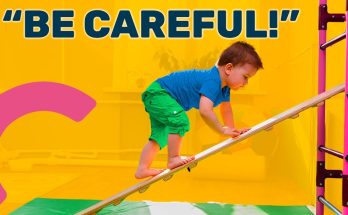As a new parent, understanding your baby’s needs can feel like trying to decipher a foreign language. Babies can’t yet communicate with words, so they rely on non-verbal cues like crying, facial expressions, and body language to express themselves. Over time, you’ll start to recognize these signals and understand what your baby is trying to communicate. Here are 18 important things babies are trying to tell you and how to respond.
1. “I’m Hungry”
A baby’s primary need is food, and they’ll make it clear when they’re hungry. You’ll often notice them rooting, sucking on their hands, or making sucking noises. Crying is another sign that your baby is hungry, but they may also start to get fussy or show interest in your breast or bottle.
Response: Feed your baby when they show signs of hunger to ensure they’re getting enough nourishment.
2. “I’m Full”
Once your baby has had enough to eat, they might pull away from the breast or bottle, stop sucking, or turn their head. They may also push the nipple out of their mouth.
Response: Respect their cues and stop feeding them. Overfeeding can lead to discomfort or spitting up.
3. “I Need to Be Burped”
After feeding, babies often swallow air, which can make them feel uncomfortable. If your baby is squirming, fussy, or arching their back after a feeding, they might need to be burped.
Response: Try burping your baby in different positions (like over your shoulder or sitting on your lap) to help release the trapped air.
4. “I’m Tired”
A tired baby may rub their eyes, yawn, or become fussy and irritable. They might also stare off into space or show signs of being overstimulated.
Response: Put your baby down for a nap or bedtime before they become too overtired. Create a calming bedtime routine to help them settle.
5. “I Need Comfort”
Babies often cry when they need comfort. They may be seeking your warmth, the familiar sound of your voice, or just the security of being held.
Response: Hold your baby close, offer them your soothing voice, and comfort them through gentle rocking, swaddling, or patting.
6. “I’m Bored”
When babies become bored, they may become fussy or start to cry. They are craving interaction or stimulation.
Response: Play with your baby, talk to them, or give them something to explore. Simple activities like tummy time, showing them toys, or singing can keep them engaged.
7. “I Need a Diaper Change”
If your baby is uncomfortable with a wet or dirty diaper, they may cry, squirm, or even try to tug at their diaper area.
Response: Change their diaper right away to avoid skin irritation and discomfort. Always check frequently, especially after feedings.
8. “I’m Too Hot or Too Cold”
Babies are sensitive to temperature, and they may cry or seem restless if they are uncomfortable because they’re too hot or too cold. They may sweat, have cool skin, or feel clammy.
Response: Check your baby’s temperature by touching their neck or back. Adjust their clothing or the room temperature to make them more comfortable.
9. “I’m Overstimulated”
A baby can get overstimulated from too much noise, light, or activity. If they are crying, turning their head away, or covering their face, they may be trying to tell you it’s all too much.
Response: Take your baby to a quiet, dimly lit space. Reduce noise and activity to help them calm down.
10. “I’m Uncomfortable”
Babies may become fussy or cry if something is irritating them. It could be a hair wrapped around their finger, clothing that is too tight, or something in their environment that’s bothering them.
Response: Check their clothing, diaper, and surroundings for anything that could be causing discomfort.
11. “I’m in Pain”
When babies are in pain, their crying tends to be more intense and may be accompanied by signs of distress, like pulling their legs up to their stomach or arching their back.
Response: Check for signs of illness, injury, or gas. If the pain persists, it may be time to call the pediatrician.
12. “I’m Gassy”
Gas can make a baby uncomfortable, and they might cry, squirm, or pull their legs toward their chest as a result.
Response: Help them by burping, or gently massaging their tummy. Some babies benefit from tummy time to help relieve gas.
13. “I’m Feeling Social”
Babies love interaction. They may coo, smile, or make eye contact to show that they are engaged and want to connect.
Response: Respond with smiles, baby talk, or playful gestures. This helps build a bond and promotes their social development.
14. “I Want to Be Held”
Some babies simply want to be held or carried. If they cry when you put them down or if they become fussy without contact, they may be telling you they need closeness.
Response: Hold your baby, wear them in a baby carrier, or try rocking them gently. Holding them provides security and comfort.
15. “I’m Teething”
Teething can cause discomfort, and babies may chew on their hands, drool excessively, or become irritable.
Response: Offer a teething ring, a cold washcloth, or a gentle gum massage to help soothe their sore gums.
16. “I’m Too Tired to Sleep”
Sometimes, babies struggle to fall asleep because they are overtired. Their cries may become more intense and frantic if they miss their ideal sleep window.
Response: Try to create a soothing bedtime routine and lay them down for a nap or bedtime at the first signs of tiredness.
17. “I’m Developing”
As babies grow, they go through various developmental milestones. This could include rolling over, trying to grab objects, or learning to hold their head up.
Response: Encourage their development by providing opportunities for tummy time, interaction, and safe exploration. Celebrate each milestone as your baby grows.
18. “I Love You”
One of the most wonderful things babies can communicate is love. Even though they cannot say the words, they show affection through eye contact, cooing, and responsive behavior.
Response: Always respond with love and care. Your baby will thrive in an environment where they feel cherished, secure, and loved.
Conclusion
Your baby is constantly communicating with you, even though they cannot yet speak. By paying attention to their body language, facial expressions, and cries, you’ll begin to understand what they need. Whether they are hungry, tired, uncomfortable, or just need a little extra love, responding to their cues helps build a secure attachment and promotes their emotional and physical well-being. As a parent, becoming attuned to your baby’s signals is an important step in providing the care and support they need to grow and thrive.



